vSphere Lab Storage: Synology DS414slim Part 3 - Storage
This blog post covers the setup of the volumes and shares. Depending on your disk config, variuos volume configurations are possible. The DS414slim supports all important RAID levels (Synology Hybrid RAID, Basic, JBOD, RAID 0, 1, 5, 6 and 10). I recommend to use RAID 5, if you use more then two disks. I decided to create a RAID 5 with my three Crucial M550 SSDs and use the Seagate Momentus XT as a single disk.
Volume1: RAID 5
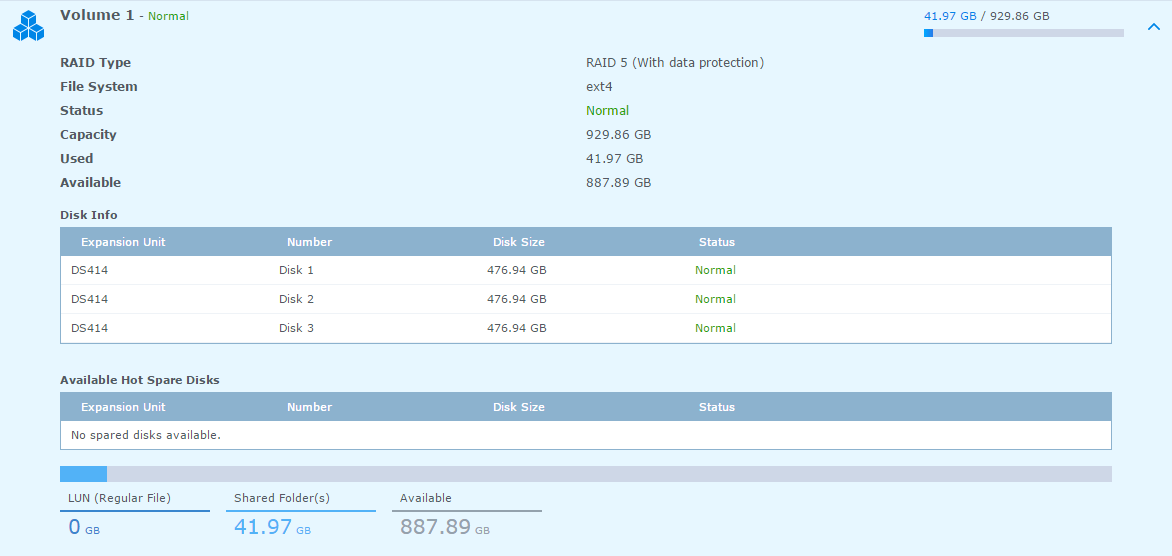
Patrick Terlisten/ vcloudnine.de/ Creative Commons CC0
Volume2: Single disk
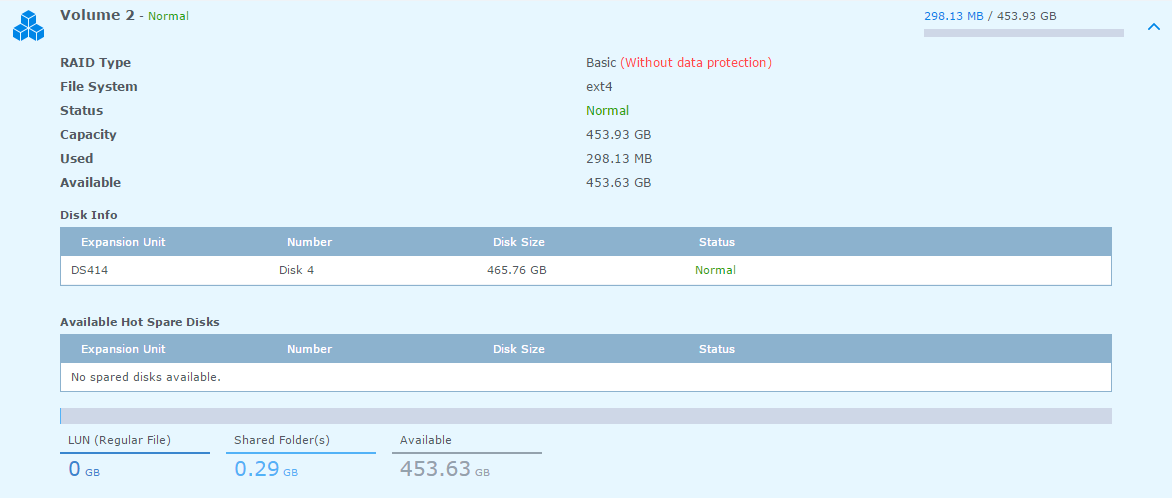
Patrick Terlisten/ vcloudnine.de/ Creative Commons CC0
Create a NFS share
This disk setup gave me about 880 GB of SSD and 450 GB of SATA storage. To use this storage, we need to create at least one NFS share. Voume1 contains only a single NFS share. Volume2 contains a NFS share and an additional CIFS share, that I use for my Veeam backups. Since I use the Volume2 only for VM templates, I put both shares, the CIFS and NFS share, on the a single volume and a single disk.
To create a new NFS share, open the Control Panel > Shared Folders and click “Create”. Enter a name, a description and select a volume. Then click “OK”.
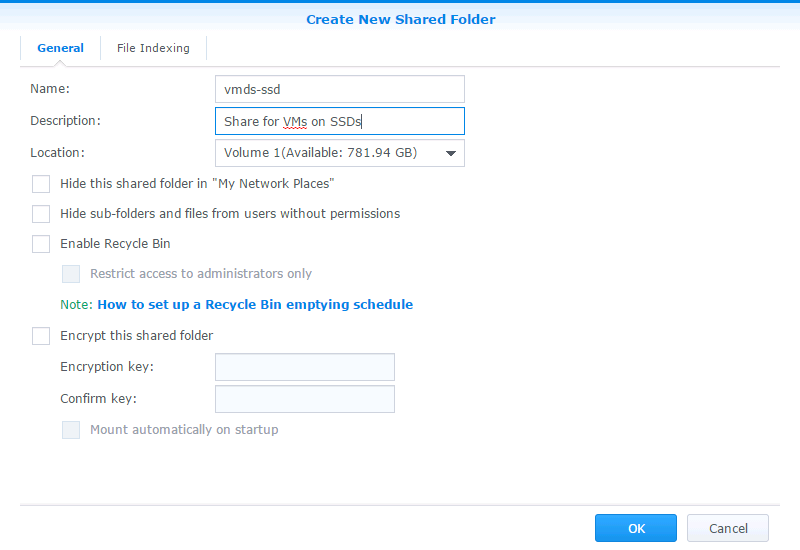
Patrick Terlisten/ vcloudnine.de/ Creative Commons CC0
Grant the local admin account “Read/ Write” permissions on the new share and click “NFS Permissions”.
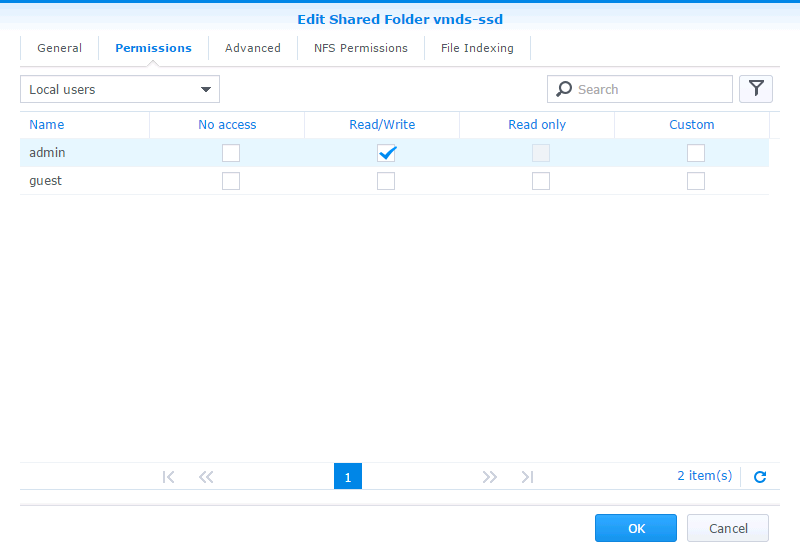
Patrick Terlisten/ vcloudnine.de/ Creative Commons CC0
Enter the subnet or the IP address of your ESXi host to grant the host(s) access to the NFS share. Select “Map root to admin” and ensure that asynchronous transfer mode is enabled. Click “OK”.
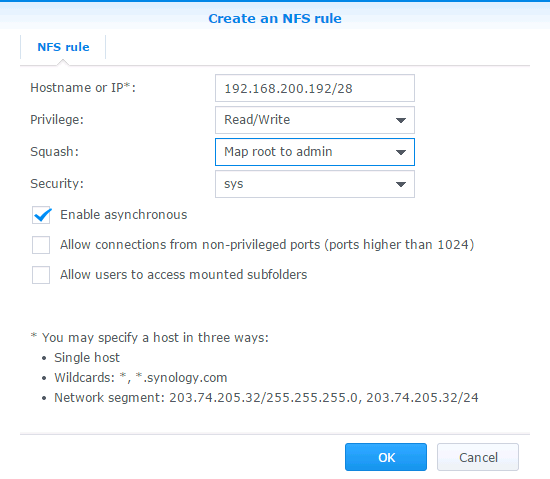
Patrick Terlisten/ vcloudnine.de/ Creative Commons CC0
That’s it. Now you can mount the NFS share to your ESXi hosts. You can mount the NFS share using ESXCLI, the vSphere C# client or with the vSphere Web Client. The latter provides the very handy NFS multimount feature. This allows you to mount a NFS share at multiple hosts at the same time. With ESXCLI, you can mount a datastore with this command:
esxcli storage nfs add -H 192.168.200.205 -s /volume1/vmds-ssd -v VMDS-NFS-SSD
To mount a NFS datastore with the vSphere Web Client, simply right-click a cluster and select “New Datastore”. Provide the needed information and in step 4 you can select one or multiple hosts, to which the NFS share should be mounted. Very handy!
Final words
Depending on your disk configuration, you have multiple options to configure volumes. I decided to go for a RAID 5. I strongly recommend to use SSDs, because rotating rust would be too slow. I also recommend to use NFS instead of iSCSI in a lab environment. It’s easier to setup and faster.
Part 4 of this series covers the installation of the Synology VAAI-NFS plugin: vSphere Lab Storage: Synology DS414slim Part 4 – VAAI-NAS Plugin
